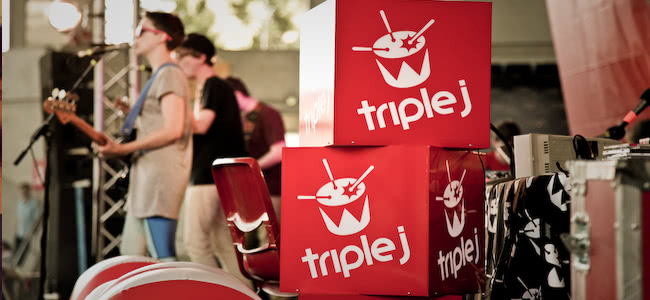As Tone Deaf recently reported, triple j has comprehensively smashed commercial radio in the latest radio ratings survey. For the first time ever, Australia’s national youth broadcaster came in number one for 25-39-year-olds in Sydney, Melbourne, Brisbane, Adelaide, and Perth.
In other words, this means triple j are the top station for the key advertising demographic in every major Australian radio market. The 25-39-year-old demographic is highly prized among advertisers, as these are usually post-tertiary consumers with full-time jobs.
Of course, the irony is that triple j is a government-run and commercial-free network, which means advertisers are not able to target their campaigns with the station has the ears of the demographic they most need.
But as ABC Director of Radio Michael Mason recently explained to Radio Today, that’s not all that sets triple j apart from the rest of the Australian radio landscape, which is populated mostly by commercial, music-focused radio and talk stations.
“They’re one measure, but they’re an important measure,” Mason said of the ratings survey. “I think there’s many other measures of what we do. We’ve got to be able to show that we’re adding variety, quality, and a point of engagement for the community.”
“And ratings are important, but the audience has to feel a sense of attachment to us and if they’re not feeling a sense of attachment and value around us, there’s less meaning.” Mason added that ratings prove audiences are “engaging with the products that we’re putting out there”.
“I think its whole credibility is built on doing things that others wouldn’t dream of doing.”When asked about what it is that sets triple j apart from other stations and yields such success, he explained, “I think it’s its genuine love of the audience, its genuine understanding of the audience, and its ability and pride in playing great new music all the time and being really plugged into that 18-24 demographic.”
“That’s its point of difference,” he continued. “We take risks with presenters, we try new voices, and the station thinks and feels like the DNA of 18-24-year-olds. I don’t think anybody knows that audience better than triple j.”
“I think we provide a slightly different market need,” he said of the rivalry between the J and the commercial sphere. “But we know people come to triple j as a place to pick up on musical tastes, someone who can inform them of what to listen to and what to buy.”
“I think its whole credibility is built on doing things that others wouldn’t dream of doing. I think it sits at a nice, different position and allows the commercial sector to really play in a very commercial space with broad appeal music and allows triple j to absolutely make people satisfied with radio as a product and a platform.”
[include_post id=”457370″]
“We can really push boundaries and allow everyone else to go and play for mainstream audiences,” he added, “because I think if you try and mix a bit of mainstream into the music that triple j plays, I don’t know if they’re too compatible.”
“I don’t think you’d end up with a successful commercial product. This allows triple j to really target 18-24s, really understand what they’re looking for and allows others to get out into broader spaces.”
Mason said the ABC will continue to pursue their own research into Aussie radio consumers, “observing how they use the radio, how it fits into their lives, how it helps their lives”. He also gave props to ABC’s digital arm, calling Double J “a big winner for us”.




































